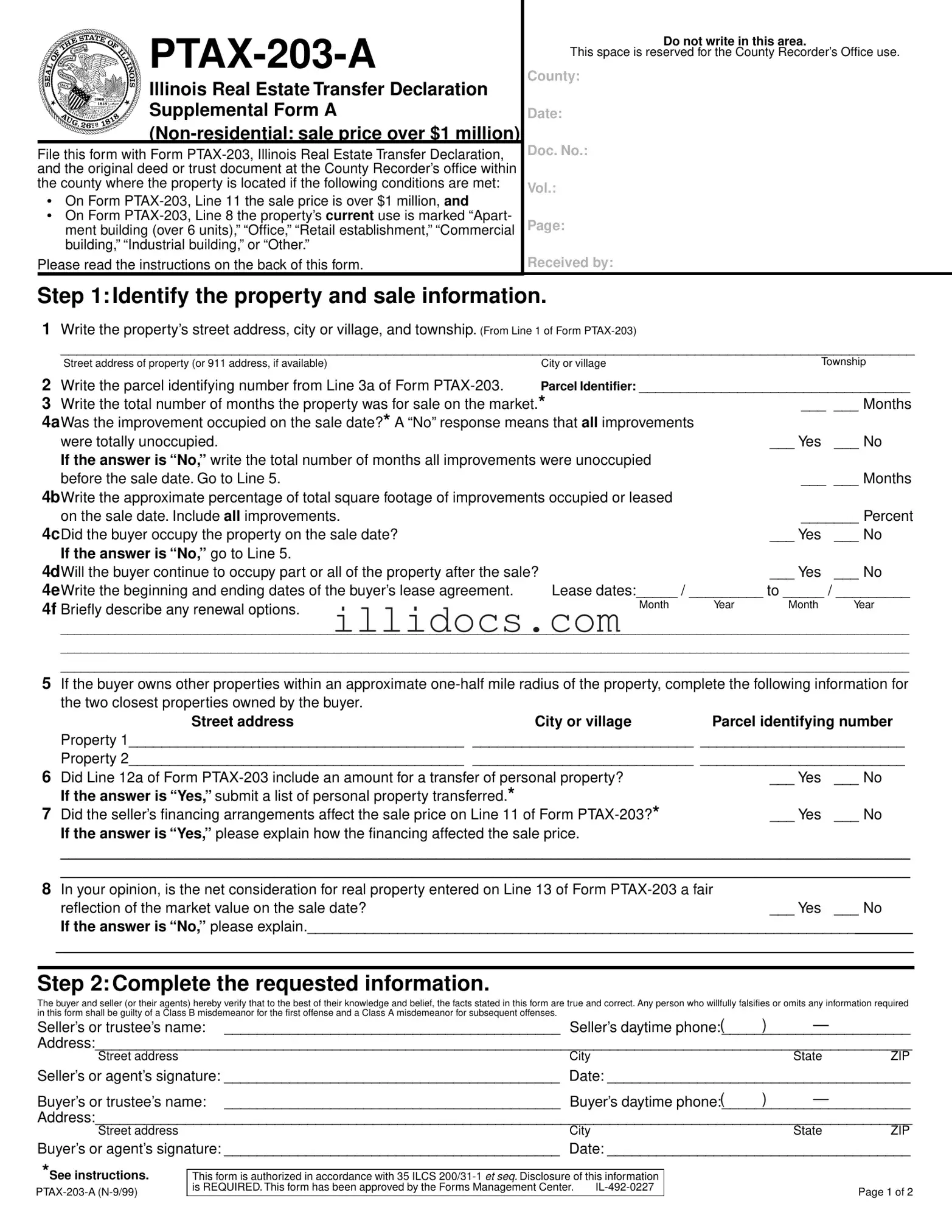What is the Illinois PTAX-203 A form?
The Illinois PTAX-203 A form is a supplemental document required for non-residential real estate transactions where the sale price exceeds $1 million. It must be filed alongside the PTAX-203 form and the original deed or trust document at the County Recorder’s office in the county where the property is located. This form collects detailed information about the property and the sale, ensuring compliance with state regulations.
Who needs to file the PTAX-203 A form?
Any seller or buyer involved in a non-residential real estate transaction in Illinois where the sale price is over $1 million must file this form. Additionally, the property must be used for specific purposes, such as an apartment building with more than six units, office space, retail establishments, commercial buildings, or industrial buildings.
When should the PTAX-203 A form be filed?
This form should be filed at the same time as the PTAX-203 form and the original deed or trust document. It is essential to submit these documents to the County Recorder’s office promptly after the sale to ensure proper processing and compliance with state laws.
What information is required on the PTAX-203 A form?
The form requires several details, including the property’s street address, parcel identifier number, sale duration, occupancy status, and whether the buyer will occupy the property after the sale. Additional questions address any personal property included in the sale and the impact of financing arrangements on the sale price.
What happens if the information on the PTAX-203 A form is incorrect?
Providing false or misleading information on the PTAX-203 A form can lead to serious consequences. Individuals who willfully falsify or omit required information may face criminal penalties, including misdemeanors. It’s crucial to ensure that all information is accurate and truthful before submitting the form.
Is there a deadline for submitting the PTAX-203 A form?
While specific deadlines may vary by county, it is generally advisable to submit the PTAX-203 A form along with the PTAX-203 form and the deed immediately after the sale is finalized. Timely submission helps avoid potential penalties and ensures compliance with local regulations.
Can I get assistance in completing the PTAX-203 A form?
What should I do if I have more questions about the PTAX-203 A form?
If you have additional questions, consider reaching out to your local County Recorder’s office or a legal professional specializing in real estate. They can provide specific guidance and address any concerns you may have regarding the form and the filing process.
